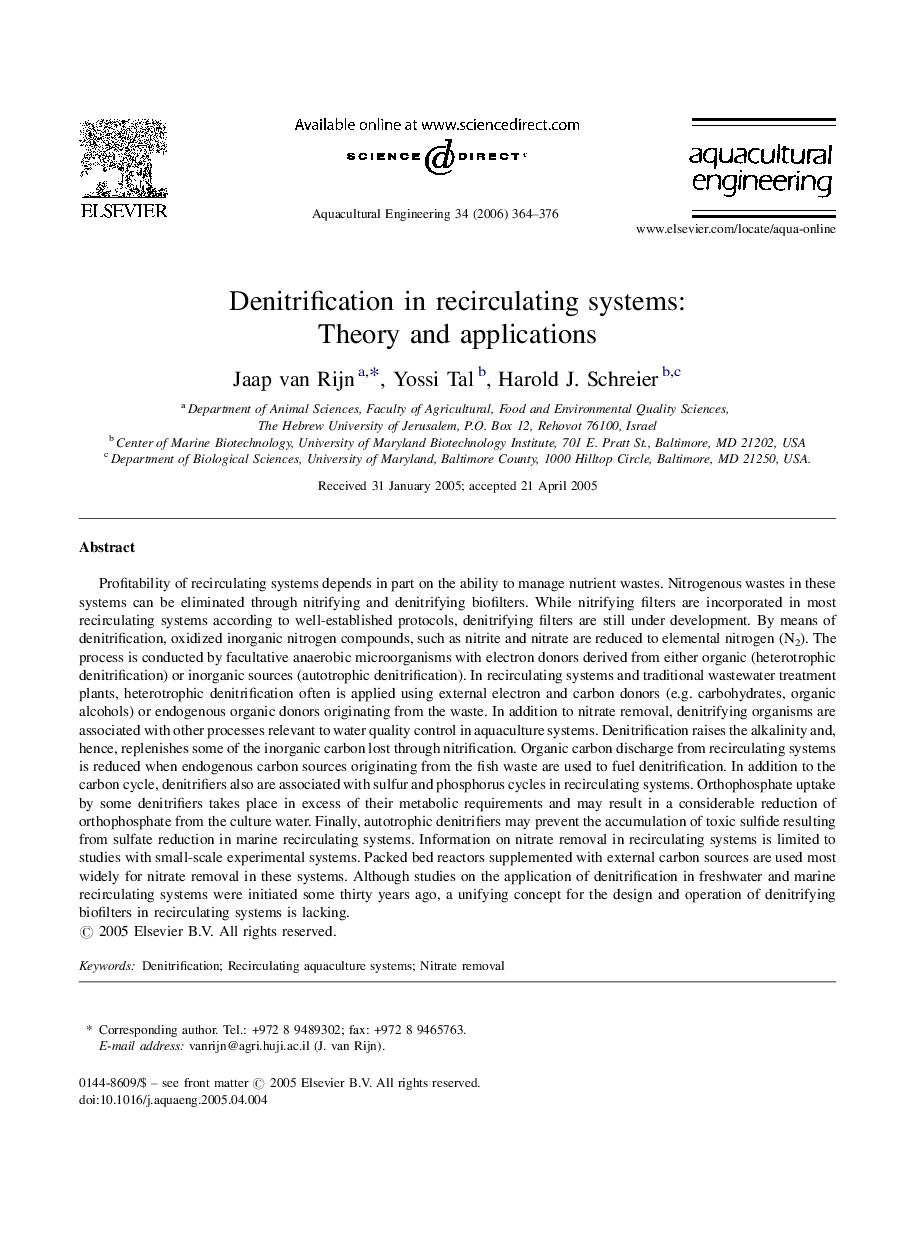| کد مقاله | کد نشریه | سال انتشار | مقاله انگلیسی | نسخه تمام متن |
|---|---|---|---|---|
| 6381683 | 1324117 | 2006 | 13 صفحه PDF | دانلود رایگان |
عنوان انگلیسی مقاله ISI
Denitrification in recirculating systems: Theory and applications
دانلود مقاله + سفارش ترجمه
دانلود مقاله ISI انگلیسی
رایگان برای ایرانیان
کلمات کلیدی
موضوعات مرتبط
علوم زیستی و بیوفناوری
علوم کشاورزی و بیولوژیک
علوم آبزیان
پیش نمایش صفحه اول مقاله

چکیده انگلیسی
Profitability of recirculating systems depends in part on the ability to manage nutrient wastes. Nitrogenous wastes in these systems can be eliminated through nitrifying and denitrifying biofilters. While nitrifying filters are incorporated in most recirculating systems according to well-established protocols, denitrifying filters are still under development. By means of denitrification, oxidized inorganic nitrogen compounds, such as nitrite and nitrate are reduced to elemental nitrogen (N2). The process is conducted by facultative anaerobic microorganisms with electron donors derived from either organic (heterotrophic denitrification) or inorganic sources (autotrophic denitrification). In recirculating systems and traditional wastewater treatment plants, heterotrophic denitrification often is applied using external electron and carbon donors (e.g. carbohydrates, organic alcohols) or endogenous organic donors originating from the waste. In addition to nitrate removal, denitrifying organisms are associated with other processes relevant to water quality control in aquaculture systems. Denitrification raises the alkalinity and, hence, replenishes some of the inorganic carbon lost through nitrification. Organic carbon discharge from recirculating systems is reduced when endogenous carbon sources originating from the fish waste are used to fuel denitrification. In addition to the carbon cycle, denitrifiers also are associated with sulfur and phosphorus cycles in recirculating systems. Orthophosphate uptake by some denitrifiers takes place in excess of their metabolic requirements and may result in a considerable reduction of orthophosphate from the culture water. Finally, autotrophic denitrifiers may prevent the accumulation of toxic sulfide resulting from sulfate reduction in marine recirculating systems. Information on nitrate removal in recirculating systems is limited to studies with small-scale experimental systems. Packed bed reactors supplemented with external carbon sources are used most widely for nitrate removal in these systems. Although studies on the application of denitrification in freshwater and marine recirculating systems were initiated some thirty years ago, a unifying concept for the design and operation of denitrifying biofilters in recirculating systems is lacking.
ناشر
Database: Elsevier - ScienceDirect (ساینس دایرکت)
Journal: Aquacultural Engineering - Volume 34, Issue 3, May 2006, Pages 364-376
Journal: Aquacultural Engineering - Volume 34, Issue 3, May 2006, Pages 364-376
نویسندگان
Jaap van Rijn, Yossi Tal, Harold J. Schreier,